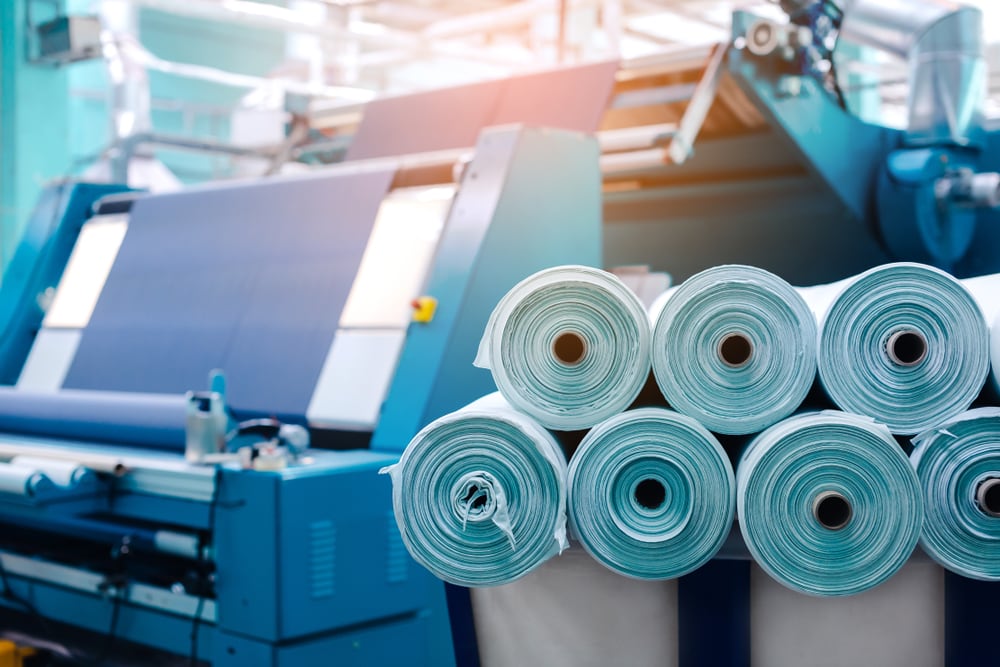Technical Non-woven Textiles
Delaware Valley Corporation is a global industrial textile manufacturer offering technical textiles for different applications. From our inception, our products have been used in many industries worldwide. Our products are engineered for high performance and durability, making them ideal for use in challenging environments.
What are non-woven textiles and where did they originate
Non-woven fabrics have been made from various materials including animal hair, vegetation, paper, plastic, metal, and glass fibers. The first non-woven fabrics may have been wool felts and papyrus writing material which both date back to ancient times. Modern day non-woven textiles were first developed in the late 19th century out of economic need with accelerating advances in construction and materials taking place in the mid-20th century to create strong and durable textiles for a variety of applications. Delaware Valley Corporation initially produced non-woven products for furniture cushioning and packaging for military electronics.
The Nonwovens Institute sites that “…early “nonwoven fabrics” were created by adhesively bonding fiber webs. The first written definition of nonwoven fabrics came from the American Society for Testing and Materials in 1962 which defined them as “textile fabrics made of carded web or fiber web held together by adhesives”. The INDA defines a nonwoven as “sheet or web structures bonded together by entangling fiber or filaments (and by perforating films) mechanically, thermally, or chemically. They are flat, porous sheets that are made directly from separate fibers or from molten plastic or plastic film. They are not made by weaving or knitting and do not require converting the fibers to yarn.” Examples of commonplace non-woven products include household wipes, dryer sheets, furniture leg pads and entry mats.
Delaware Valley Corporation produces non-woven textiles by interlocking fibers with barbed needles in a technique known as needle-punching. This helps to improve strength and durability of the resultant textiles, making them ideal for harsh applications, and allows us to produce not only flat surfaces, but face structured surfaces such as velour (felt like), ribbed, diamond and others.
Needle-punch non-woven textiles are used in a variety of industries:
● Medical,
● Consumer,
● Automotive,
● Construction,
● Industrial.
There are other uses for needle-punch non-woven textiles beyond these industries. Their
potential uses continue to expand. The EV (electric vehicle) market has embraced needle-punched non-woven materials due to their light weight and durability for use in sound absorption and floor covering.
High performance, non-woven fabrics developed over the years
Non-woven fabrics have undergone a lot of development over the years. Early non-woven
fabrics were made from plant fibers or animal hairs, but today they are materials including plant, plastic, glass, and metal fibers.
High-performance textiles are designed for specific applications where their implementation is critical. They are used in demanding environments, such as automotive and aerospace. For demanding applications, these textiles must meet strict strength, durability, and environmental requirements and are tested to ensure that they meet standards before being specified in such applications. Specifications that are considered are weight (GSM), thickness, permeability, porosity, pore size, abrasion and bearding resistance, bursting strength, tensile, tear, puncture, and elongation.
The engineering of high-performance, technical textiles requires a deep understanding of the materials, the textile construction and how they will be used. This knowledge is used to design fabrics that meet the application’s specific needs. Delaware Valley Corporation’s material focus is on synthetic, man-made and natural fibers, which along with our production process, has been refined over the years, and today we produce many types of high performance, needle-punched non-woven products. Our needle-punched constructions can be used as is or modified with binders or laminates to meet specific application requirements.
Applications for needle-punched non-woven fabric
Delaware Valley’s needle-punched non-woven fabrics have been used in a variety of
commonplace applications, including:
● Medical: Dermal wraps, face masks.
● Furniture: Entry mat fabrics, wall coverings, carpet backing, padding.
● Automotive: Trunk liners, door panel and map pocket coverings, head liners, engine hood insulation, seat backs and molded wheel well coverings to name just a few.
● Construction: Roofing felts, pond liner felts, geotextiles, thermal and sound insulation, wall coverings.
● Filtration: Air filters, water filters, fuel filters.
● Industrial: Sound absorption, surface protection/enhancement, fatigue mats, fluid containment, gasketing, vibration isolation
● Geotextiles: Erosion control, drainage, reinforcement.
Their usage is limited only by our collective imagination.
Needle-punched non-woven textiles are robust and durable
Non-woven fabrics are versatile and durable fabrics that can be used in various applications. From medical to automotive, these fabrics have many uses. If you want a strong and durable fabric, needle-punched non-woven fabrics are the way to go.
We are an industry leader in needle-punch, technical textiles
The textile industry is an integral part of the economy and constantly evolving. The high Impact Factor (the frequency with which an average article in a journal has been cited in a given period) of the Journal of Textile Science and Engineering, one of the most highly respected publications in its field, is a testament to the importance of textiles in everyday life.
Delaware Valley Corporation is a leading provider of high-performance needle-punch non-woven textiles. Contact us or request a quote now to discover more about our products and how we may assist you in meeting your requirements.

